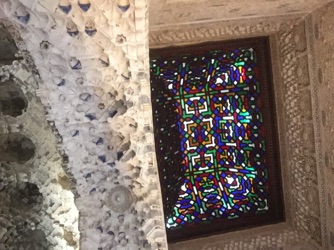Text


Text

Text

Text

Text

Text

Text

Text

Text


Text

Text



Text

Text


Text

Text

Text

Text

Text

Text

Text

Text

Text

Text

Text



Text



Text

Text


Text


Text




Text


Text

Text

Text

Text


Text



Text

Text

Text

Text

Text



Text

Text





Text

email: indigostreetpottery@me.com








Text

Text



Text

Text





Text








October 2011 Newsletter
Indigo Street Pottery Newsletter
Welcome to our monthly newsletter! It is part of our website indigostreetpottery.com , which you can browse from this page if you click on the subjects in the header. We write here about our studio, arts events, projects, studios of our friends, garden musings, and whatever else strikes our fancy. Hope you enjoy it!
August 13, 2011: 2011 Annual Art Auction, Anderson Ranch Art Center, Snowmass, Colorado www.andersonranch.org
May of 2012: Jeff Reich and Farraday Newsome, 2-person exhibition, Plinth Gallery, Denver, Colorado http://plinthgallery.com/
1 Indigo Street Pottery Calendar
2 J

Text

Text

Text

Text

Text



Text

Text





Text

email: indigostreetpottery@me.com








Text

Text



Text

Text





Text

email: indigostreetpottery@me.com







email: indigostreetpottery@me.com
June 2016 Newsletter
Indigo Street Pottery Newsletter
Welcome to our monthly newsletter! It is part of our website indigostreetpottery.com , which you can browse from this page if you click on the subjects in the header. We write here about our studio, arts events, projects, studios of our friends and garden musings.
Spain, Part 2!












We spent three weeks in Spain this past April and shared the first portion of our trip in last month’s newsletter, which included our stays in Madrid, Barcelona and Sevilla. This month we’ll share furtther experiences in southern Spain’s Andalucia, starting with Cordoba, then Arcos de la Frontera, and on to Granada. Next month we’ll continue (and finish!) reporting on our trip through Andalucia with our visits to Malaga and Nerja on the Costa del Sol. The trip was inspired by Farraday’s need to research the historical fiction novel she is writing, partly set in 13th through 15th century Andalucia (al- Andalus), Spain.

















We took the high speed Spanish AVE train from Barcelona south to Andalucia, about six hours and averaging 180 mph. Our first stop in southern Spain was Sevilla, which I wrote about in last month’s newsletter. Our second stop was Jerez de la Frontera, once on the the border between Christian and Islamic Spain. Jerez is famous for its sherry. In fact, the English word “sherry” derives from the name Jerez. We especially loved the local dry sherry, redolent of raisins.
From Jerez we took a bus up into hill country and stayed in another former border town, Arcos de la Frontera. Our hotel, a former convent, was perched on a cliff, as you can see from this view off our patio. The area was ravaged by an earthquake in 1755, the same earthquake that demolished Lisbon in Portugal. As a result, there are many arched supports (photo on the right) throughout the town built to stabilize the buildings.
Jeff Reich going up a typical staircase street in the white-washed hill town of Arcos de la Frontera.
Although Arcos de la Frontera was reconquered by the Catholic Christians in the 13th century, its Islamic heritage is still very evident. This Moorish castle was built in the 11th century. After Arcos was reconquered, Ferdinand and Isabel met here to hold strategy meetings. It is now a private residence.
This mysterious 15th century Islamic “magic circle” of colored stonework in Arcos is just downhill from the Catholic cathedral that was built on top of the old mosque. It still draws Sufi Muslim pilgrims, despite the modern rain drain in the center.
Being so far south and not that far from Gibralter, we were not surprised to see North African influences. Our favorite restaurant in Arcos de la Frontera was Morocan and named Babel. http://www.lonelyplanet.com/spain/andalucia/arcos-de-la-frontera/restaurants/moroccan/babel
After a couple of days in Arcos, we took the bus back down to Jerez and caught the train to Cordoba. This originally Roman bridge in Cordoba was the first to span the Guadalquiver River, making Cordoba a strategic site historically. The bridge’s Roman foundation dates to the 1st century, the arches to the 16th century.
After we crossed the old bridge we stopped to admire the fortified gate at its end, now a museum of Andalucia.
Cordoba is famous for its mosque. After the Catholics reclaimed Cordoba they built a large church in the middle of the mosque complex. Unfortunately, we were there on a Sunday and unable to go in the mosque because it was closed for Catholic Mass. We’ll remember that next time!
From Cordoba we took the AVE train towards Granada. The Spanish government is still working on converting the train tracks into Granada to accommodate the modern AVE trains, so we got off in Antequerra and took a bus to Granada.
The Alhambra, on a steep hill overlooking Granada, is one of the few remaining purely Islamic palaces in Spain. Although a Christian palace was built on the grounds after the Catholic Reconquest in 1492, the Islamic palaces were not destroyed. The Christian palace wasn’t used long since they couldn’t maintain or understand the water canal engineering system.
During the ensuing centuries the hilltop complex became a ruin, abandoned, defiled and languishing in state of deterioration until interest in its preservation was ignited by the American writer Washinton Irving, who visited in 1829 and wrote the book Tales of the Alhambra. Since then, restoration has been ongoing.
The lovely Alhambra is now recognized as a Unesco World Heritage site and is supported by international funding and research. The two photos above are from our approach and entrance to the fortress palace, Jeff pausing in the magnificent Wine Gate.
This is the old Alcazaba, the original fortress built by the Alhambra’s founder, Nasrid Sultan Muhammad I, during his reign from 1238 to 1273. The line of Nasrid Sultans succeeding him built additional palaces and other structures through the years. Although the Alhambra grounds are thronged every day by tourists from all over the world, we left our hotel before sunrise to hike up early before the ticketed sites had opened. We were rewarded with a beautiful and peaceful sunrise, and with just the company of the famous feral cats of Alhambra, it was a quiet time before the crush of the day. By mid-morning this courtyard was filled with food and beer vendors, and multitudes of people.
Granada is Spanish for pomegranate, the city’s symbol and a motif seen everywhere, including this fountain near the entrance to the Alhambra.
A glimpse of a lovely garden from an upper level of the Alhambra’s Palace of the Lions.
Once inside the palace complex we walked through room after room of high ceilings, beautiful arches and plaster-embellished walls.
Here is a glimpse of one of the few surviving original stained glass windows in the palace.
One of the most stunning aspects of the buildings are the dense muquarnas, carved plaster formations on the domed ceilings reminiscent of cave stalactites. Many of the palace walls are also adorned with low relief plaster, as in this photo, or ornately glazed tile.
These are the two most famous courtyards of the Alhambra. On the left is the Courtyard of the Myrtles with its peaceful, enormous reflecting pond. It is the central courtyard of the older Mexuar Palace. On the right is the Courtyard of the Lions in the newer Palace of the Lions. The fountain was originally surrounded by a lush garden.
The Courtyard of the Lions features the famed Lion Fountain, twelve water-spewing marble lions encircling a central fountain. When the Catholics conquered the palace they took this fountain apart to study it. Unfortunately, they not only were they unable to understand its engineering, they were unable to get it working again when they put it back together. It wasn’t until recent times that it once again flowed.
The Alhambra complex included a small city, the medina, to supply products and labor for the palace and its royal occupants. In addition to the service industry of cooks, cleaners, repairmen, etc., there were the productve industries of bakeries, tanneries, potteries, and anything else the Alhambra might need to exist. The ruins of the medina are a fascinating and large part of the site.
The lush, extensive gardens of the Alhambra are lovingly maintained. They once supplied the palace and the medina with food as well as beauty.
The bath house in the medina, built for the commoners, is beautifully constructed with columns, arches and high, star-shaped ventilation windows to the sky. Although it was great to walk through, one can only imagine how it must have been when running water and bathers filled these spaces.
This was our favorite restaurant in Granada, Spain. Named Paprika, it served elegant, inspired vegan cuisine. Delicious! http://www.paprika-granada.com/en/
We had a wonderful day exploring the old palatial fortress of the Alhambra, a city on a hill, so much so that we walked back up twice more before our time in Granada was over. Jeff is walking back down to Granada on the old Cuesta de los Chinos pathway.